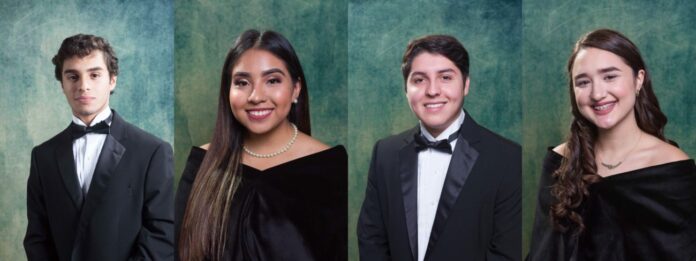HARLINGEN — It’s the life they’ve dreamed of and the reality for which they’ve yearned.
And now, four graduating seniors from the Harlingen School of Health Professions will take ownership of that reality. They’re about to begin their journeys toward medical professions as students in the new biomedical sciences program at the University of Texas Rio Grande Valley.
“I feel pretty excited because I know I’m going to be surrounded by people who can motivate me in different ways and challenge me,” said Diana Silva, 19, who would like to study women’s health.
She and her three classmates, Cesar Ruiz, 18, Adrian Garcia, 18, and Karla Galvan, 17, are the inaugural students in the new medical pipeline between high school and the UTRGV School of Medicine.
Administrators at both UTRGV and the Harlingen Consolidated Independent School District have spent many months paving the way for these students to pursue medical careers. The district and the university signed an agreement in December 2018 to create the new medical “pipeline.” The decision was hailed as “groundbreaking” by many.
“It’s a phenomenal program,” said then-School Board President Greg Powers.
“This is a great opportunity for the Harlingen school district, for our children and our students,” he added.
The program allows the district to identify aspiring medical students and move them into a track that will facilitate their entry in the UTRGV medical program, said Dr. John Krouse, dean of the UTRGV School of Medicine.
“They can get a bachelor’s degree in biomedical sciences and then have an opportunity to move into our school of medicine and become physicians,” Krouse said at the signing.
“By working that way we can provide them with counseling and opportunities so they can graduate with an MD in eight years,” Krouse said at the signing.
Now, a year and a half later, Krouse extended his congratulations to the four students and to the district.
“We are thankful to the Harlingen Consolidated Independent School District and their vision in partnering with UTRGV to create a pipeline for students interested in healthcare professions,” he said. “We will continue our commitment in providing these learning opportunities to Rio Grande Valley students.”
Everyone is excited about the new cohort, said Dr. Adela Perez, professor of the department of family medicine at UTRGV.
“We’re very excited to have these four students who are really our first cohort of students in this partnership to go through the BMED program,” said Perez, who is also a family medicine physician.
The four students have proven their commitment to the medical profession over a period of years, engaging in all sorts of health-related activities. Everyone who applied engaged in a rigorous application process which included essays regarding their qualifications.
“There are a couple of essays, specific questions as to why you believe you’re fit for the program,” said Adrian Garcia, 18, who plans to study gastroenterology.
“My answer was I’ve been doing this for five years,” he said. “For this entire year I’ve been going out to hospitals, I’ve been going out to community clinics, I’ve been going out to medical facilities. I’ve been working with patients, working with doctors, working with medical providers, and I’ve first-hand seen it.”
Thus, his passion proven, he learned in December he’d been accepted to the program. Now he and the other students are preparing to register for classes and attend orientation, all of it online.
“We had a Zoom conference call last week with our dean and the dean of the School of Medicine regarding transition and the application process from BMED to medical school,” he said.
He and the other three students will pursue a four-year bachelor’s degree in biomedical sciences, after which they will have the option of attending medical school. Of course, numerous changes occur at this point in someone’s life, said Perez, who is also associate dean of diversity and inclusion at UTRGV.
“From what I gather in their bios, they all want to go into the medical field to become physicians,” Perez said. “That may change as they have different experiences throughout those four years. They can even be clinical researchers, they may decided to go into nursing, occupational therapy, physical therapy.”
The broad range of opportunities offered by the foundation of the biomedical sciences degree is what makes it so beautiful, she said.
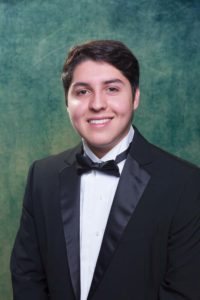
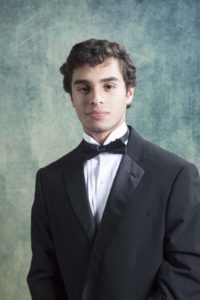
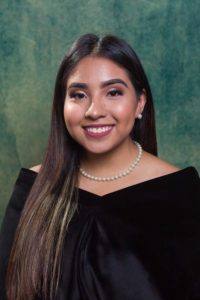
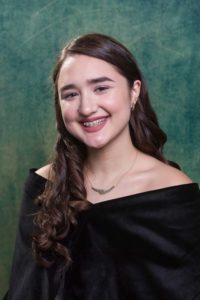
“The curriculum itself in the BMED program is structured in such a way to really give them a wonderful background in the sciences,” she said.
The students themselves are diverse in their specific interests. Karla wants to study obstetrics or fetal surgery, a very complicated field.
“Fetal surgery is just operating on the fetuses in the womb, and it’s a very hard and prestigious type of surgery,” she said.
Very few physicians specialize in this field, which means her skills will be in high demand, she said. Like the others, Karla was surprised when she learned she’d been accepted into the program. But, she’d demonstrated her passion for medicine for some time.
“Of course grades are always important,” she said. But … “It’s also important how involved you are in the community and how dedicated you are to the medical field,” she said. “If you put that you want to study medicine but in your resume you show no interest in medicine, you just … what do you really want?”
Cesar has faced many obstacles throughout his young life, moving here from Monterey, Mexico, when he was only in the third grade. He knew little English but he managed to overcome that and so many other challenges he faced. He believes that showed UTRGV his power of commitment.
“I feel like that stood out,” he said. “It feels great because I’ve always known I wanted to go into the medical field and people don’t know they have these great opportunities in the Valley.”
And that’s what it’s all about. Educators at both the public school and university levels have toiled in recent years to create more opportunities in the Valley for aspiring physicians. Much discussion has focused on the fact that doctors often practice where they’ve trained. In an economically-distressed area like the Valley, many talented students lack economic resources to attend school in other parts of the state or outside the state. This provides a way.

